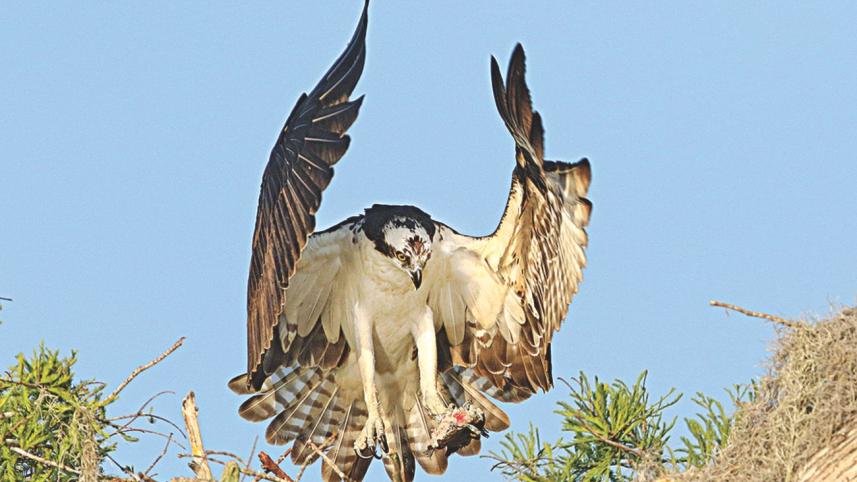Looking for Birds in Florida

The American state of Florida, situated in the country's southeast, is a favourite destination of bird lovers. The state boasts about five hundred species of birds. Like our country, winter and spring are the best seasons for seeing them.
Last year, on my first birding trip there, I lucked upon a rare bird: a smooth-billed ani. I was eager to return and made the trip last week. My destination was a lake on the eastern part of the state which is home to many species of birds including ospreys, owls, hawks and ducks.
For me the osprey is a special bird. It was one of the first birds I photographed (in Sundarban in 2011.) I have seen several ospreys in Bangladesh, but only as solitary birds. Closely related to eagles and hawks, ospreys are known from time immemorial for catching and eating fish.
The lake I visited is popular among fishermen and birders. The edges of the lake are lined with cypress trees. One day, at sunrise, I took my place on a boat to travel across the lake to the other side.
As the boat came closer to the shore, I saw scattered cypress trees emerging from the lake, roots submerged in the water. They varied in height from ten to fifty feet. On top of many of them, ospreys had built nests. There must have been several hundred osprey pairs spread around the lake. The round nests, made from sticks, twigs and moss, were large: three feet or more in diameter.
Spring is breeding season for the ospreys, and normally by this time nests contain chicks. However, this year the eggs were late in hatching and chicks were sparse. I spotted two. Their most distinguishing feature is their orange eyes. Adult ospreys have yellow eyes.
Several male ospreys were looking to attract a mate by performing their breeding display. They would hold something in their talons – a fish, stick, or even moss – and dive, hover, shoot straight up and in general show off their flying skills. Whether it was targeted at a particular female or all single females of the neighbourhood, I could not tell.
I also saw nests of cormorants and saw a mother feeding its chick which inserted its entire head into the mother's open mouth to get its food.
Every so often a flock of ducks flew across the sky. Most were black-bellied whistling ducks with pink bills. Some pretty wood ducks also showed up as did groups of ibis.
We took the boat into a smaller canal that fed into the lake. On the sides we saw green and little blue herons. The latter were particularly friendly. We also saw great blue herons which resemble our grey herons. There were two types of egrets (great and little) but our intermediate egret was missing. Cattle egrets clumped together in groups, some of them in orange breeding plumage.
On the taller trees red-shouldered hawks looked for prey. A barred owl called to its mate and flew across the canal. Dark, dramatic-looking black vultures circled the sky. Pileated woodpeckers resembled bullets flying from one tree to another.
After my time here I could understand the magnetism that Florida holds for birders. I will be sure to return.
www.facebook.com/tangents.ikabir



 For all latest news, follow The Daily Star's Google News channel.
For all latest news, follow The Daily Star's Google News channel.
Comments